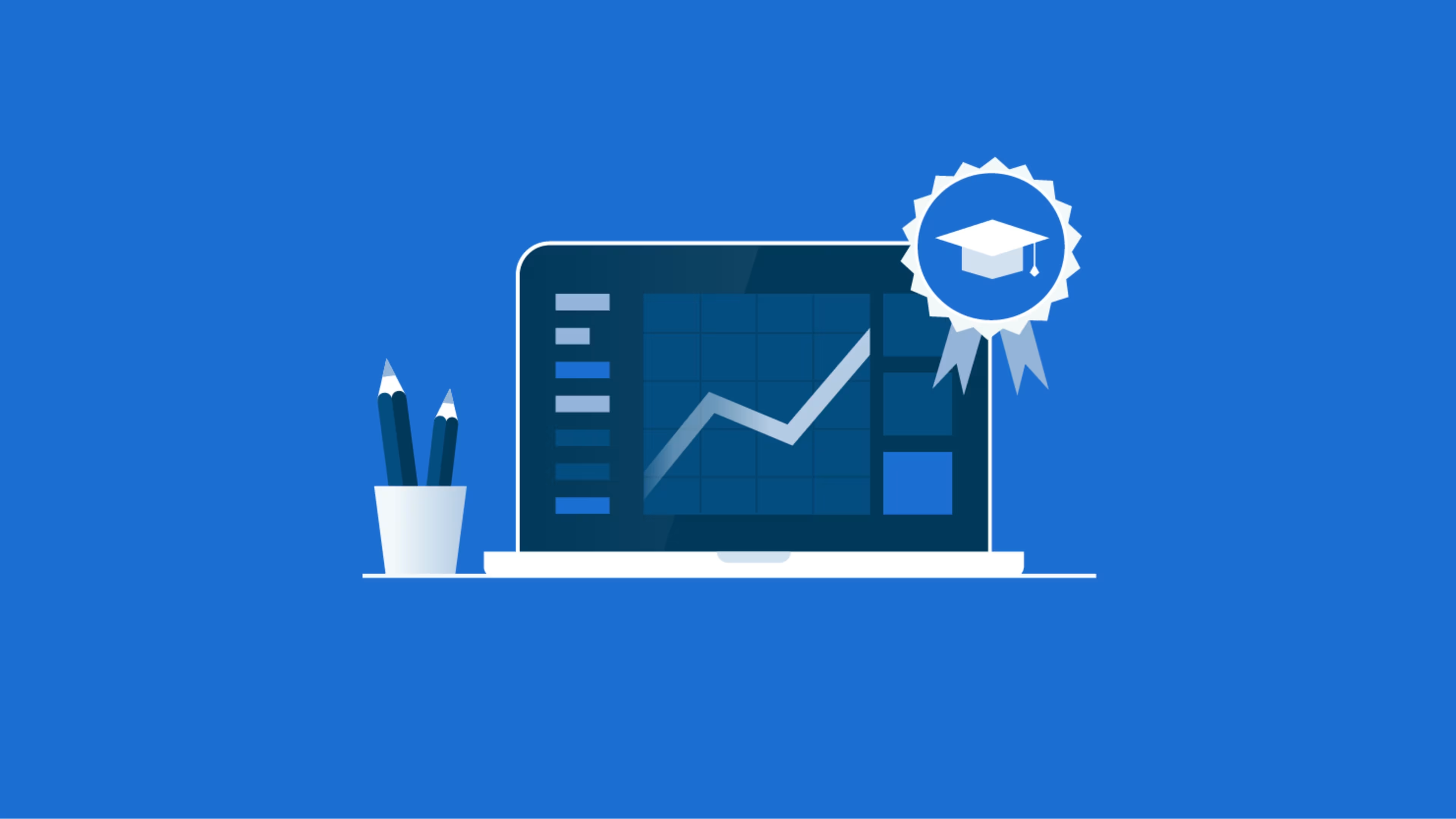Data analytics can help your education institution reach the next level. This guide helps improve outcomes, increase efficiency, and save money.
Gartner’s 2021 Hype Cycle for Higher Education indicates that the use of data analytics in education is on the rise and expected to reach stable, widespread adoption in the next two to five years (full research available to Gartner clients).
This means institutions today have a unique opportunity to discover how best to use analytics in their own organizations and lay the groundwork for future success as the technology becomes widely adopted.
In this guide, we’ll discuss the meaning of data analytics and share ways that you, as a higher education institution, can leverage it to improve.
What is data analytics?
Data analytics is the collection and analysis of data to gain actionable insights with the goal of increasing organizational efficiency and business outcomes.
In the world of education, this can range from optimizing the enrollment process to improving learning outcomes and the student experience overall.
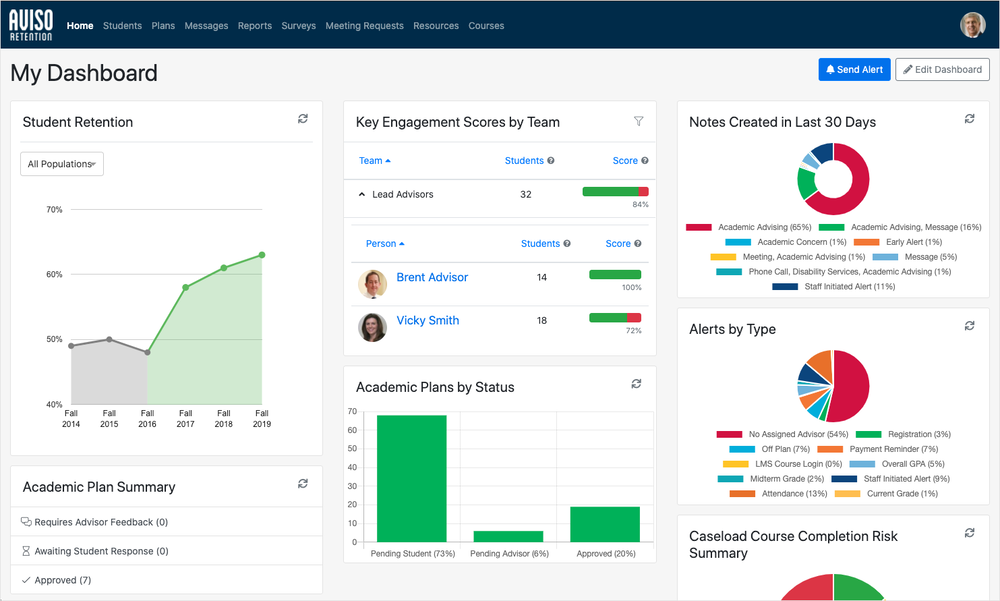
An example from Aviso Retention of what a data analytics dashboard might look like (Source)
Analytics can also aid in the development of services and business practices as well as finding new efficiencies, cost savings, or revenue streams.
There are many types of education software to help you accomplish these goals, including school management software, admissions software, school accounting software, and more.
Despite their disparate functions, one thing these types of software all have in common is that they contain some form of analytics functionality.
Common functions include reporting dashboards, such as the one pictured above, the import/export of student or grading data, applicant tracking for enrollment, and budgeting/forecasting for the financial side of things.
How can education institutions leverage data analytics?
Higher education institutions are under increasing pressure to improve outcomes and increase efficiency in all areas of their operation (even in the face of decreasing budgets).
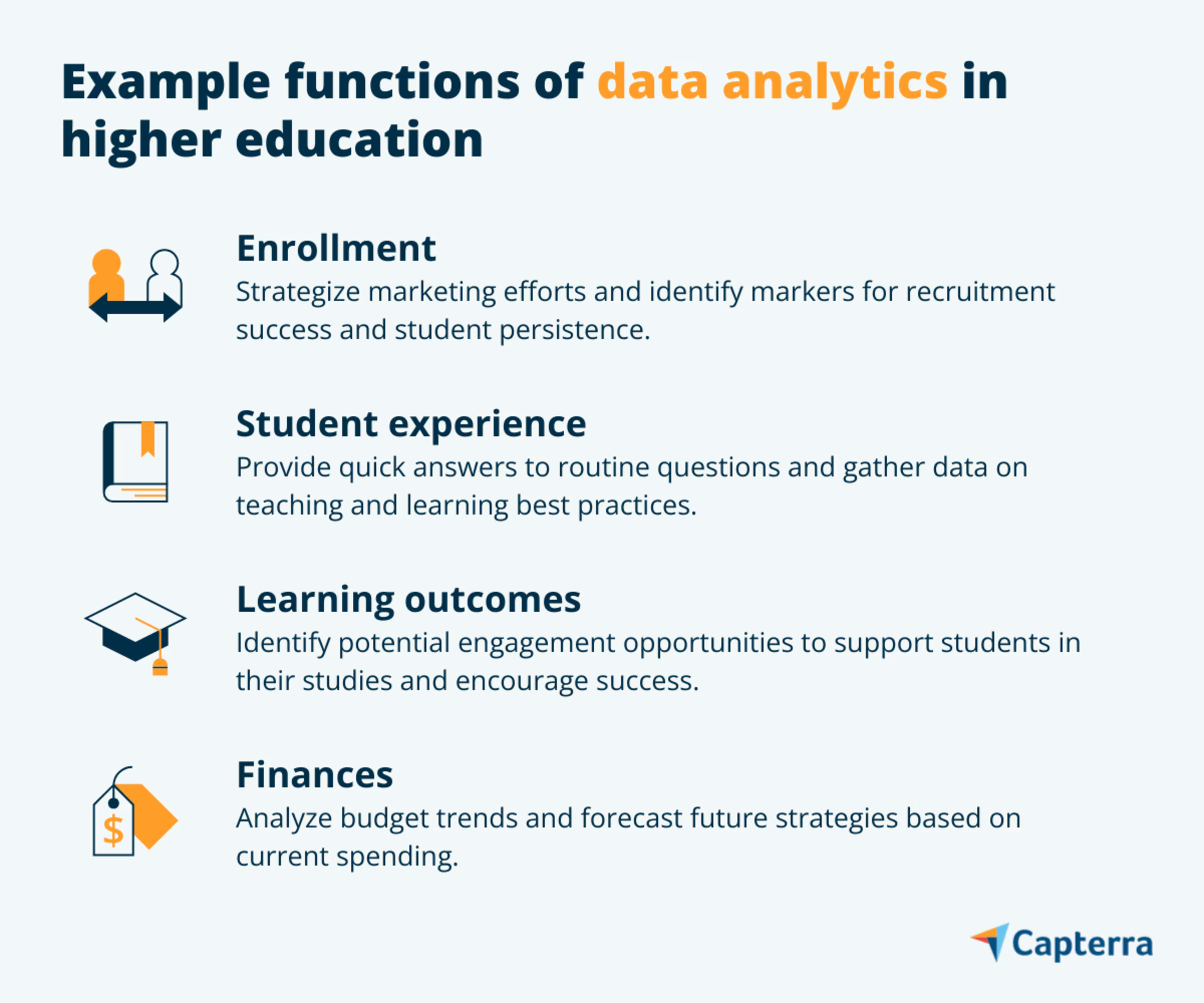
The use of data analytics offers a widely applicable way to accomplish these goals, and its utilization will be a key differentiator between institutions who are resilient in the face of challenges and those who are unable to respond effectively.
What does that mean for institutions like mine?
More and more organizations are embracing data analytics in an effort to address opportunities or effectively respond to challenges that arise. Establishing a foundation for proper data management, including the appropriate tools, is a clear-cut way to ensure your organization stays ahead of the curve.
Education areas impacted by data analytics
Since data and analytics is something that can be applied in many areas to achieve results, it’s difficult to know where to start.
It requires buy-in and significant work to build a successful data culture at a university, so we’ll start by covering three key areas that serve as low-hanging fruit for the utilization of analytics.
1. Learning outcomes
One of the main areas where analytics can be employed to drive success is the learning outcomes of students.
Data analytics software can help identify engagement opportunities for student support, create personalized development plans, and offer valuable insight into areas where degree plans and coursework can become more efficient.

An example from Civitas showing functionality to identify student support opportunities (Source)
Utilizing analytics and predictive insights to course correct for students who may be (or soon will be) struggling with their schoolwork is a great way to be proactive as an administrator or teacher. This serves to enrich the learning experience for the student and will save you time and money spent on reactive measures in the long run.
2. Enrollment
Another key area where data analytics excels in education is the enrollment process. As reported by NPR, college enrollment continues to fall as a result of the COVID-19 pandemic, making it all the more competitive for universities looking to secure new students.
Data analytics allows institutions to be more strategic in their enrollment approach, correlating data collected with how effective their marketing and recruiting efforts are at attracting prospective students.
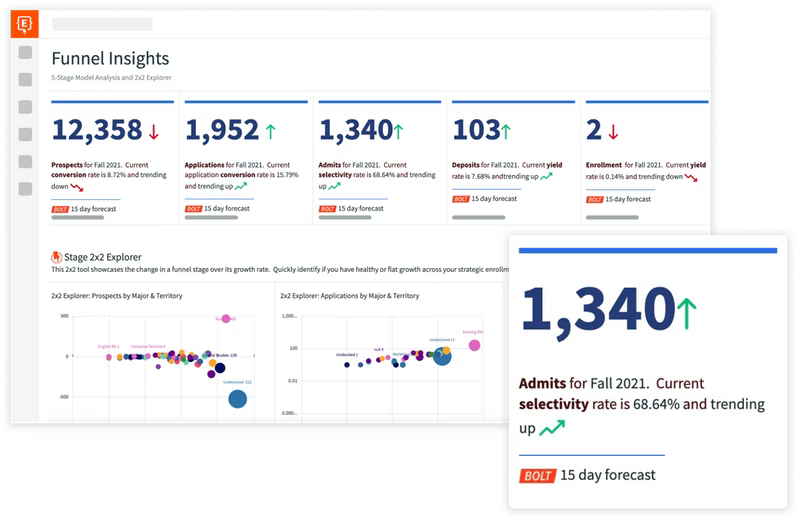
An example of an enrollment analytics dashboard (Source)
Institutions are even using predictive analytics to aid in retention efforts, leading to better conversion rates and increased retention in a time of stiff competition and low enrollment.
3. Organizational efficiency
Finally, your organization’s overall efficiency can be vastly improved through the use of data analytics.
For example, leveraging insights gained from data analysis can help you get to know students better or improve your financial outlook.
You can learn where prospective students like to spend time on your website, discover what marketing campaigns resonate with them, and identify which of your social media channels they visit during the recruitment process.
Additionally, analytics can help improve your financial outlook by eliminating logistical inefficiencies for organizations that deal in complex multi-step processes such as student enrollment.
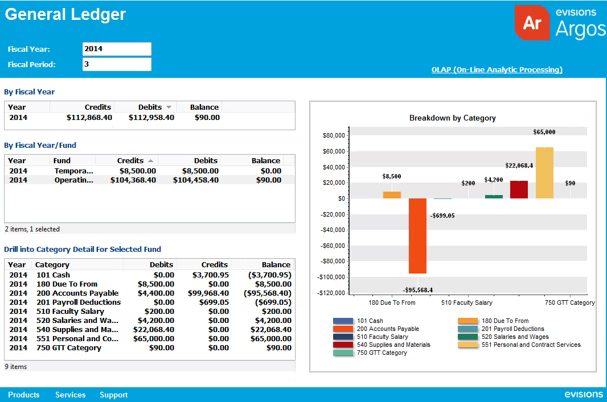
An example of cross-functional budget management (Source)
Whether it’s logging where a process tends to break down, tracking departmental expense trends, or providing a bird’s eye view of key data points on the student journey, there are many ways that simply tracking data can help you gain valuable insights to act on.
Software systems that support data analytics
It’s clear that data analytics can help you make faster and smarter business decisions in a variety of areas. But how do you access these features?
Below, we cover a few software solutions that include analytics functionality and share some details on how they can help your educational institution improve the learning experience for all involved.
- Higher education software
Higher education software helps institutions of higher learning with student recruitment and admissions processes, curriculum and faculty management, financial aid, eLearning, and much more. As an end-all-be-all solution for institutions at the college level, higher education software usually takes the form of a suite of complementary functions contained in one unified platform.
Data analytics functionality can make its way into all of these areas as a way to collect raw educational data, analyze trends, identify best practices, and increase the overall efficacy of the organization.
- School management software
School management software offers a one-stop-shop for student, staff, and faculty data that can be accessed by school administrators, office managers, accountants, and registrars.
With the proper collection and analysis of this data, educators can automate admissions and enrollment processes as well as streamline class scheduling. School management software can also integrate with existing accounting, classroom management, and gradebook software to automate billing, manage tuition payments, track attendance, and store grading information.
- Admissions software
Admissions software is used primarily to manage student applications and automate enrollment processes for schools and universities. Some admissions software also offers comprehensive features to not only automate but also optimize the enrollment process.
Aside from handy dashboards and visualizations of applicant information, some platforms also offer individual student views and prescriptive analysis to identify which administrative actions or what amount of financial aid will have the greatest impact on a student’s likelihood to enroll.
The effect then becomes multi-faceted since you’re able to see both actions you can take as an administrator and the potential financial ramifications of pursuing certain applicants.
Not yet ready to adopt full-fledged analytics software? Here are some ideas to bridge the gap
If you’re not yet in a position to fully utilize data analytics software, whether it’s budgetary constraints or lack of buy-in from key stakeholders, there are still ways to make progress on the path to analytics enlightenment.
Manual data management: Collecting and analyzing data manually is a good option for institutions just getting their feet wet with data analytics. Granted, it is a very manual (and tedious) process, so it will take some time and leg work to establish a foundation that works for you.
There are a variety of free and paid data management tools out there, and tools like Google Sheets will work as you start out. Embarking on a process to determine what data should be tracked within your organization and devising preliminary organization around that data is an excellent strategy to start.
Devise a data-centric culture: According to Guidehouse, a data-centric culture can be critical to an organization’s success, allowing institutions to make decisions based more on evidence and less on instinct. This can affect organizational success at all levels, from strategic decisions guiding the entire enterprise to influencing day-to-day operations.
What this might look like for educators is first determining what data should be collected. For enrollment, this could mean key points in the recruitment journey where desired candidates are either won or lost. For existing students, this could mean tracking points of reduced persistence on the way to a degree in hopes of proactively addressing them.
Whatever the case may be, communicating the importance of tracking these items to your staff and getting buy-in from folks at all levels is crucial. Once people are keyed into the benefits of analyzing what goes on inside the organization, they too will see and embrace the outcomes that can be generated from it.
Want help finding the right data analytics software?
Check out our list of education software by searching “education” here. Start by selecting the type of software you’re looking for (e.g., higher education, school management, admissions, etc.), then filter by features and cost to compare the different software options.
Once you’ve narrowed down your options, there are hundreds of reviews from educators just like you to help find the best fit.
